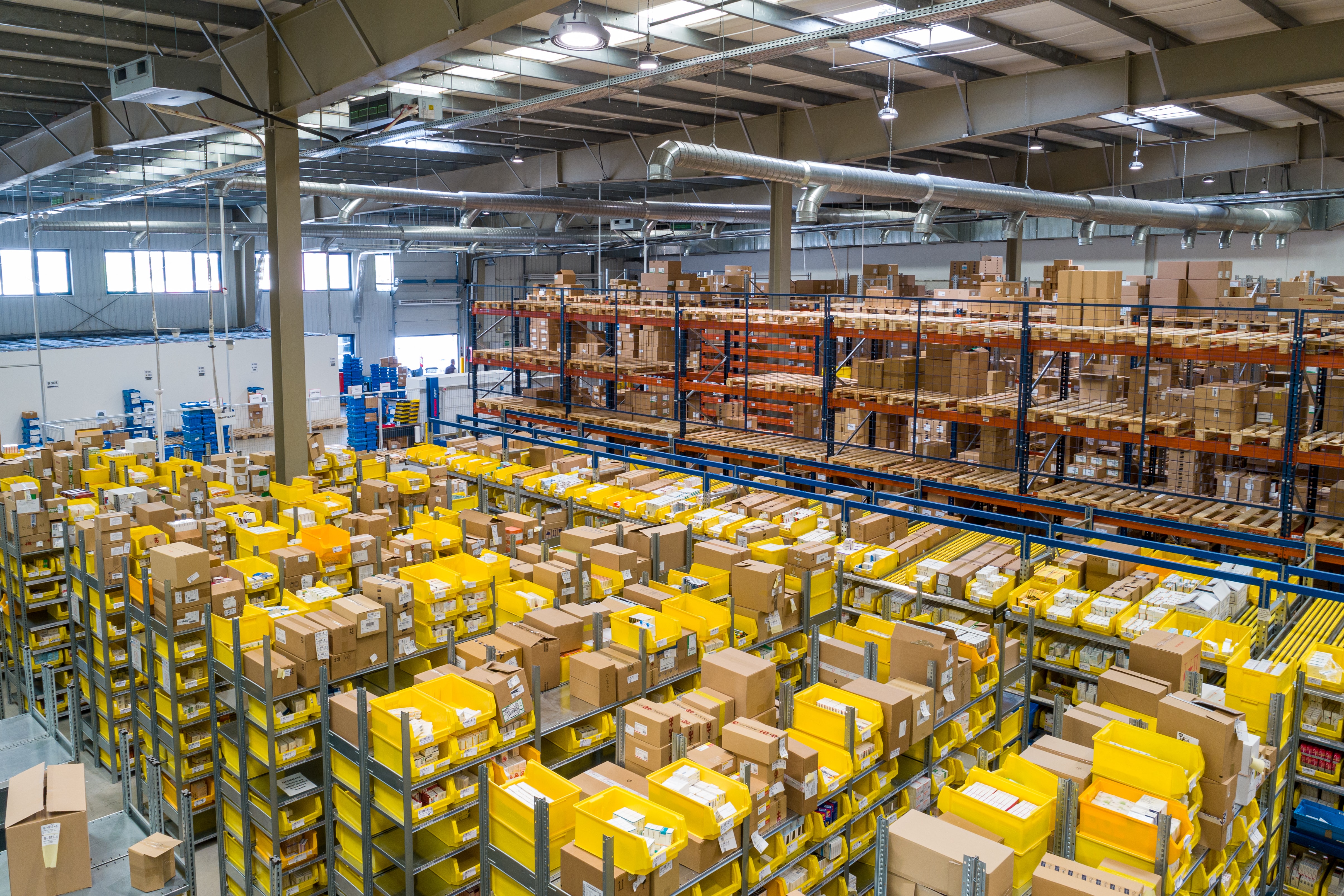The Excess Inventory Challenge Finding a Solution to the Overstock Challenges in the Modern e-Commerce Landscape
By Editorial Team, B-Stock
This is an abridged article—read the full piece here.
The Rising Cost of Doing Business
In a 2021 blog post, the online retail platform company Shopify describes e-commerce returns as a disease. $428 billion in nationwide returns give weight to this notion, and as consumers trade physical commerce for e-commerce, the unprecedented volume of returns has led to new headaches for retailers.
Return addiction aside, businesses now cope with supply chain disruptions that leave them with out-of-season unsellable merchandise. And low-cost shortcuts like trashing unwanted stock don't fly with today’s environmentally conscious consumers.
These factors all combine to create an inventory crisis that strains budgets, clogs warehouses, and wastes man-hours with inefficient reverse logistics processes.
While innovative new practices can offer a way forward, it’s critical to understand the factors at play in the current liquidation and reverse logistics crisis.

What’s Causing the Unsold Inventory Crisis?
In the US alone, the market for liquidated goods doubled between 2008 and 2020 to hit $644 billion. This trend raises a key question: Why is there so much excess stock in the market?
- Returns: Online retail has been on the rise for some time now, changing consumers' expectations. They demand free, unlimited, and frictionless returns—and certainly take advantage. Between all the reasons, (quality issues, wrong size or fit, slow shipping, receiving the wrong order, finding a better deal after purchase, or simple buyer’s remorse) online return rates are two to three times higher than in-store.
For many retailers, dealing with this massive amount of returned inventory is a new and costly part of doing business. Here are the key issues:
- Retailers have little control over the flow of returns making planning difficult.
- Most retailers admit that no one person owns their returns management effort.
- Companies often lack key data on returns volume, item category, and cause.
- A dedicated process requires transportation, space, and scanning and sorting equipment.
- All goods have to be inspected and repackaged before remarketing.
- Electronic inventory tracking systems don’t always cover the reverse logistics journey.
- All of these processes require human power, but finding staff can be a challenge
- Overstocking, Missed Forecasts, and Seasonality: Simply put, predicting customer demand is hard. And because out-of-stocks (OOS) cost retailers $1 trillion every year, it may seem safer to buy too much than too little.
The problem of overstocking varies by vertical. For example, apparel companies must consider complications like seasonality and multiple sizes, while the food industry contends with perishability and sell-by dates. When most sales leaders lack confidence in their organizations’ forecasts, one must wonder: Are their projections based on data or simply intuition?
- Supply Chain Issues: The recent pandemic caused major supply chain issues, with facility closures, port backups, labor shortages, and aggressive inflation driving logistics prices up 14% from 2020 to 2021.
And while COVID-19 was an extreme example, disruptions arise regularly. In 2011, a tsunami in Japan crippled the top producer of advanced silicon wafers, and in 2019 alone, the US saw 40 weather disasters that caused damages exceeding $1 billion. Finally, cyber attacks, data beaches, global conflicts, product recalls, and accidents can all take their toll too.

The $101 Billion[1] Price Tag on Doing Nothing
Remember that $428 billion mountain of returns? E-commerce orders accounted for nearly a quarter of those. But despite getting the goods back, businesses don’t break even—for every $1 billion in sales, the average retailer incurs $106 million in cost. Here’s why:
- Storage Costs: Businesses need to pay for merchandise transportation, warehouse rent, utilities, security and more. Plus, selling overstocked goods requires more time and energy because of the need to re-package, offer discounts, and so on.
- Tied Up Cash: Until it’s liquidated, unsold inventory carries an opportunity cost. Plus, loss compounds over time when goods sit unused—and degrade in value—when that space and budget should go toward new stock.
- Product Expiration: Stock often comes with a ticking clock, especially foods. But even industries like consumer electronics and apparel are time sensitive, as product upgrades and shifting fashion trends quickly devalue goods.
The expensive reality is that free, no-questions-asked returns are the new normal. One in three repeat consumers say they would abandon a retailer if they had a “difficult” returns experience but 83% of retailers identified returns as an ongoing threat to profitability.
Thankfully there are a growing number of channels available to retailers and manufacturers that are prepared to face down the challenge.
Options for Moving & Monetizing Unsold Stock
Excess inventory, rising returns, supply chain disruptions, changing seasons, and missed forecasts are facts of life for modern businesses. But what can retailers and manufacturers do about it?
While liquidation is sometimes appropriate, it’s a blunt instrument. Liquidators often pay just pennies per unit, and occasionally sell to other liquidators, killing any hope of brand and channel control. Sending goods to landfill or the incinerator is even worse, offering zero return and bad optics to sustainability-conscientious consumers. Donation offers a more ethical alternative but still adds to costs.
Resale is the ideal option as long as the process offers good recovery, high speed and scalability, and provides a degree of brand and channel control for the seller. Options include:
- Referral programs
- Flash sales
- Internal employee discounts
- Refurbish programs
- Outlets and factory stores
- Bulk liquidation
The B2B auction is another popular way to match sellers and buyers. In the consumer space, the online auction concept is well-established; think eBay, Mercari, or Rakuten. Today, companies like B-Stock offer auction marketplaces that are tailored specifically for the needs of enterprise sellers and buyers. The unique benefits of online B2B auctions include:
- Quick, consistent clearance of stock at fair market price
- Lower workload and automated sales processes
- Comprehensive tracking and valuable historical data
- More control over resale channels and vetted buyers

The Next Phase of Excess Inventory Management
For any company grappling with the challenge of excess inventory and returns, it clearly makes sense to work with a third-party “recommerce” specialist. Outsourcing liquidation processes reduces the human hours needed to handle excess stock, frees up warehouse space, and recovers more value.
As suggested, there are multiple channels for recycling excess stock. But can the process of outsourcing go further? Is it possible to develop a partnership?
Many retailers and manufacturers believe so and are turning to recommerce specialists as advisors rather than just hiring liquidators to clear their warehouse of excess and returned stock. These specialists advise in areas such as:
- Valuing the stock accurately
- Determining the best channel for resale
- Developing viable metrics to gauge success
With a sole focus on recommerce, a specialist can offer superior, market-wide selling insights, helping to achieve better reverse logistics outcomes and enabling organizations to focus on their core competency.
Ready for a Strategic Partner?
Excess inventory presents a major challenge for retailers and manufacturers as consumer returns and other factors add pressure on overstocked warehouses.
But on the flipside, resellers and consumers are happier than ever to purchase secondary market products and support a growing circular economy. As a result, there is now a genuine opportunity to turn unsold inventory into cash while maximizing operational efficiency and saving precious space and time.
As a leader in the secondary market, B-Stock can help organizations develop, execute and continuously optimize an ever-evolving strategy for managing returns and excess inventory while making the most profit from it.
Want to dive a little deeper? Get the full picture by reading our unabridged article here.
[1] The estimated cost of returns for the 2020 US holiday season alone was $101 billion
 Editorial Team
Editorial TeamB-Stock is the world’s largest B2B online marketplace for excess and returned merchandise. Top retailers and manufacturers from around the globe count on our platform to liquidate their surplus, returned, salvage, and otherwise unsold inventory. With auctions designed to fetch the highest possible market prices and a network of 500,000+ buyers, B-Stock will help liquidate any type of inventory, no matter the category, condition, or location.